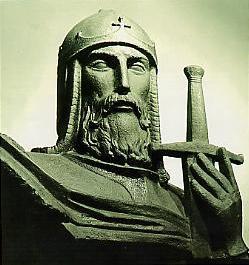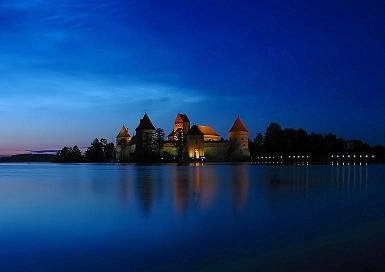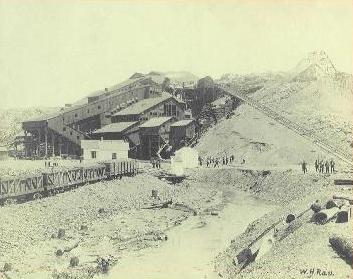
Home
Family History
Coat of Arms
Military History
Lithuanian History
Shenandoah History
Image Galleries
Map Room
Scrapbook
Links
|
Popalis Family History

A Brief History of Lithuania
Source materials for this page included; "Accomplishments of Lithuanian Catholics in America" -1943, "Lithuanians in America" JR. JONAS -1899, and many Lithuanian history sites on the world-wide-web.

King Mindaugas
Lithuania's first King and the last pagan king in Europe
In the 13th century, the Livonian Brothers of the Sword and the Teutonic Knights conquered the region now comprising Estonia and Latvia. To protect themselves against the Knights, who pressed them from the north and the south, the Lithuanians formed a strong unified state. With King Mindaugas leading his people, Lithuania was successful in fending off the invading knights and maintaining the country's sovereignty and religion. For almost two centuries German crusaders invaded the country, but Lithuania was never conquered. In the 1300?s Lithuania became one of the largest states of medieval Europe, including all of what is now Belarus, a large part of the Ukraine, and sections of European Russia; at its furthest extent it touched the Black Sea. When the prince of Lithuania married a Polish princess in 1386, the Lithuanian was made King of Poland on the condition that his country accept Christianity.

Trakai Castle
Lithuania's Capital during the Middle Ages
In 1410, the united armies of the Grand Duchy of Lithuania and Poland severely defeated the Teutonic Knights in defense of their liberty. At the same time the Grand Duchy of Lithuania withstood the attacks of the Mongol invasion and helped the Eastern European nations fight the Golden Horde.
In 1569 the Union of Liublin sealed the Poland-Lithuania Union. During three successive partitions of Poland (1772, 1793, 1795) Lithuania disappeared as a national unit. By the end of the 18th century, Lithuania had been passed to Russia. Lithuanians supported the anti-Russian rebellions that arose in 1830 and 1863. The Russians responded by trying to erase the Lithuanian national identity but the people resisted and preserved a strong identity based on ethnicity, religion, and language. On February 16th, 1918 Lithuania proclaimed its restoration to statehood, sadly this period of independence would only last 22 years. At the dawn of the second World War, first the Nazis, then the Soviets invaded Lithuania and shortly thereafter a Soviet Socialist Republic was declared. Though thousands fled (or were taken), the Lithuanians managed to prevent the 'Russianization' of the region by keeping up the birth rate. As communism began to falter in the Soviet Union, Lithuania made its move, declaring its independence in 1990. The Russians resisted this action first through an economic blockade and later, by sending in troops and tanks. In September 1991, the USSR conceded and recognized Lithuania as an independent country.

Lithuania
As the country appears today
Lithuanians in America
Lithuanians have been coming to America since 1659, when Dr. Alexander Carolus Curtius came to the new world to organize a Latin school. During the mid 19th century Lithuanians began an American migration, 1868 marked the first substantial wave of Lithuanian immigrants.

Coal Breaker
Shenandoah miners pose for a picture
These immigrants usually disembarked at the port of New York; from there they went wherever work could be found. Lithuanians worked everywhere from the farms of New England to the meat packing plants of Chicago, many were lured to the coalmines of Pennsylvania. These immigrants established a thriving Lithuanian community in Shenandoah Pennsylvania. In this country Lithuanians found opportunity and prosperity, something that was hard to come by in their homeland at that time. Lithuanians served their new country during a civil war and at times of world war. Lithuanians served their new countrymen as politicians and shopkeepers. These immigrants and their descendants became part of the American fabric and contributed considerably to its growth.
|
Lithuanian miners, in Shenandoah, fought for better working conditions, some lost their lives. To read about "The Bloody First" riot of 1902 CLICK HERE.
|
|
Copyright © 2000 - 2014 by Andrew J. Popalis
All Rights Reserved
Privacy Policy
|